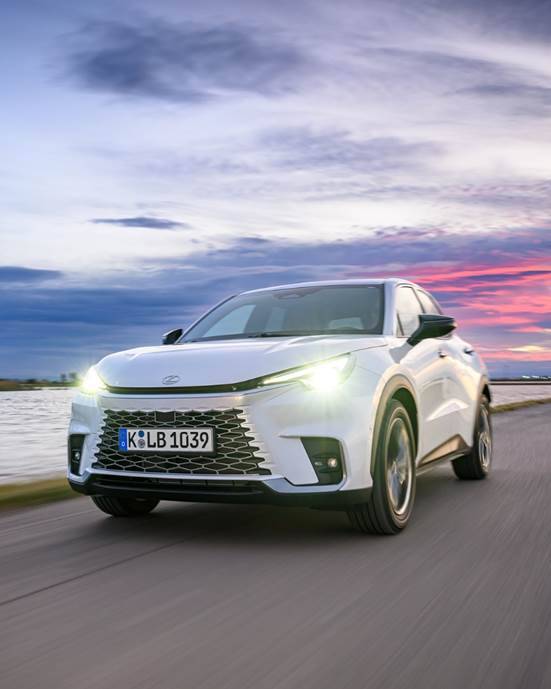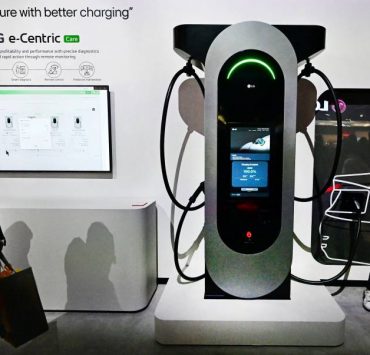Microwave

Oh wow, this summer heat. I was literally sweating it out while I was writing this yesterday afternoon. The heat index must have been in the high 40s. And what do you know, I was writing about one of the books in my home library, titled “Overheated: How Capitalism Broke the Planet—and How We Fight Back” by Kate Aronoff.
The author doesn’t mince words in pointing the accusing finger at capitalism, and what she believes as the natural tendency of humans to be greedy, for the global climate crisis. “Often, it’s said to be a matter of faulty psychobiology: We humans are hopelessly greedy, hardwired not to deal with the earth-shattering consequences of our wasteful ways,” the book says.
“Facing undoubtedly long odds, it’s tempting to turn inward, seeking personal absolution by lowering your carbon footprint: Have fewer kids, take fewer flights, and turn off the lights when you leave the room,” the book continues. And if I might add my own two cents here, some of us have restricted our choices of what to eat, avoiding meat such as pigs, cows, cattle, poultry, buffalo, goats, camels, sea creatures, etc., in an attempt to mitigate deforestation and overfishing.
But whatever we do, we are ultimately part of the human system that will inevitably contribute carbon footprint all over the place. In urban sprawls, people are surrounded by automobiles. Before this summer heat came on, I used to pedal more than drive my way around the neighborhood. Nowadays, I have no choice but to take my car even on short errands, simply because it’s just too hot, and the inefficient public transport system that makes me wait at the bus stop for much longer than I should have will cause me to suffer a heat stroke, really.
I’m hoping that, just like what happens every year, the summer heat would eventually give way to the cooler monsoon season from July onwards. By then, I could resume my walking and pedaling to nearby destinations (around 3 to 5 kms away). In areas of the world where the weather is more temperate, societies can take more active participation in managing their transport footprints. “Destination shifting,” for example, reduces the distance traveled on personal journeys (such as creating “15- or 20-minute” neighborhoods, locating homes and jobs in close proximity). “Mode switching,” on the other hand, swaps inefficient or polluting modes of travel for more efficient ones, like taking local public transport, walking or cycling, instead of driving the car.
So, what now for us who live in parts of the world where temperatures go on extreme highs and lows? Obviously, like I said earlier, we can’t just ride our bikes or take a walk in this summer heat. If you can’t actively travel, then there must be options to take lighter forms of e-micromobility. Such forms are generally becoming cheaper and even outselling electric cars in many parts of the world, including sub-Saharan Africa and some parts of Asia. E-micromobile vehicles, also known as personal mobility vehicles, include e-bikes and e-trikes.
Energy experts Jillian Anable (co-director of the University of Oxford’s CREDS Center for Research in energy demand solutions) and Christian Brand (co-director of UK Energy Research Center and associate professor at University of Oxford), authors of the article “Is the Future Electric?” that’s included in “The Climate Book,” reveal that, over the past 50 years, increasing vehicle weight and power have been reducing the rate of efficiencies for cars and vans across the board. The most popular type of car, the large heavy sports utility vehicle (SUV), made up 45 percent of all light-duty vehicle sales worldwide in 2021, outselling electric cars by about five to one. This has eroded up to 40 percent of improvements in fuel economy, according to the authors.
This information led me to get in touch with Electric Vehicle Association of the Philippines (EVAP) emeritus chair Ferdinand Raquelsantos, who drives the fully electric DongFeng Venucia with a range of 630-km while his wife Terry uses the Nanobox, a full electric compact car. Ferdie estimates that the EV’s wear and tear on the tires has been around less than 10 percent of its useful life. And while he charges their EVs 90 percent of the time at home, he asserts that public charging stations in the country are increasing in numbers. “My cost of operating an EV is about 70 percent cheaper, especially if charging through our home’s solar power generation.”
From the looks of it, there’s no stopping EVs from invading the local market. In ANC’s interview in January with Mobility Access Philippines Ventures Inc. (Mapvi) president Toti Zara, he said “the Philippine auto industry EV sector is at a very nascent stage, which is less than 1 percent. In comparison, other developed markets like in Europe, many European countries are already above 40 percent, with Norway at 90 percent, Sweden 60 percent, even a big market like Germany is already at 30 percent. If you come closer to the Philippines, our neighbor China is already at 40 percent. Even a closed-door neighbor with a similar economy, Thailand, is already more than 10 percent.”
He continued, “We will have to remember that most of the cars are imported, outside the Philippines, and it comes from China, Thailand and Indonesia. All these markets have announced moves towards electrification. We have no choice but to shift towards electrified mobility in the Philippines. It’s just a matter of time.”
That matter of time, Zara said, when 5 percent of the market is already EV, and as such mass adoption would then follow, could be in 5 years.
“China and Thailand have announced that they intend to have 100-percent EV production by 2035. Indonesia is planning to have a million EVs by 2035. So with all these, we are looking at the Philippines having a penetration ratio of EVs of about 15 to 20 percent within the next five years and really closer towards 20 percent by 2030,” said Zara.
Hopefully, by the time EVs actually become ubiquitous in the country, public charging stations have also kept up. Recently, we drove the long-range EV BYD Atto 3 from Bonifacio Global City in Taguig to Baguio City and back. We didn’t need to charge from Manila to Baguio even if the car was loaded with heavy passengers, although we did get plugged in at the Shell Recharge Station in Rosario, La Union, for about 5 minutes just for the photo op. Without that brief charging stint (which added around 12 percent to the battery), we would still have arrived in Baguio with 17 percent energy remaining. On the way back to Manila, we took the scenic but steep Asin Road to optimize the regenerative brakes of the Atto 3, thereby storing more energy into the battery without having to plug in at the charging stations. Even when we faced the horrible Friday rush hour traffic in the last 15 km of our journey, we arrived in BGC with about the same level of charge, around 15 percent.
If money was no object, though, I’d perhaps go for the smallest Lexus model, the LBX, a self-charging hybrid electric subcompact crossover with its interior not sourced from animals. It boasts of a 1.5-liter three-cylinder engine that has “world-class thermal efficiency, supported by high-speed combustion, achieved with technologies evolved from Formula 1 engineering, including a longer stroke, increased valve angle and laser-clad intake valve seats. The Ultra-lightweight pistons are designed for performance at high engine revs and have a resin skirt coating that reduces friction with the cylinder wall.”
Today’s EVs, with their long ranges, make range anxieties truly a thing of the past. But let me go back to my earlier point. Even with EVs, size matters, especially if you’re only making short trips within the neighborhood. E-micromobiles should be the go-to vehicle. I’m thinking along the lines of the head-turning 3-wheeler Toyota i-Road with the 50 to 60 km range. I remember test driving this in Toyota City in Japan many years ago. Truly fun to drive, and an ideal way to go in congested urban sprawls like what we have here.
















